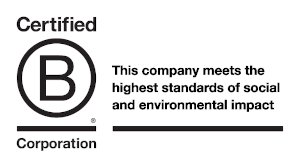Error – The elephant in the room when we talk about sustainability in construction
In 2019, almost every professional institution associated with the UK construction industry has declared a Climate & Biodiversity Emergency. However, if the industry wants to make any meaningful progress towards becoming less environmentally harmful, it is essential to resolve what is well-known but poorly addressed: making errors – which is evidenced by the industry’s below-average productivity (ONS).
The Get It Right Initiative (GIRI), a group of organisations dedicated to reducing error in construction, defines error as any action or inaction which results in a requirement for re-work, a requirement for extra work, or produces a defect. Not only does fixing errors require additional energy and material resources, it also produces additional construction waste. There is a clear link between error, cost and environmental impacts (particularly embodied carbon and waste).
Our sister company Expedition did research for GIRI that indicates that the UK construction industry spends £10-25bn or roughly 21% of project costs on direct errors, indirect errors, latent defects and unrecorded process waste. Some of these costs are associated with the use of additional material and generation of additional waste (others are related to delay costs).
Environmental impacts associated with waste
The UK construction industry produces about 140 million tonnes of waste every year (GOV UK). The Waste Resources Action Programme (WRAP) estimate that the average carbon emissions from the main construction materials over their whole life cycle amount to roughly 1.8 kg CO2e per kilogram of material. 10% of that is associated with demolition and subsequent reuse, recycling, incineration or landfill. Based on an average design life of 60 years for construction assets, the annual emissions associated with construction waste are 4.2 million tonnes CO2e. Note: This figure does not address the impact of error and associated waste on other Planetary Boundaries such as land-use change, chemical pollution and freshwater depletion.
In comparison, the UK’s total emissions in 2017 amounted to 460 million tonnes CO2e, and the UK Green Building Council estimates that 10% of that is the direct result of construction activities, which aligns with the above estimate of 4.2 million tonnes CO2e associated to construction waste.
The Committee on Climate Change recommends annual investments of £20-40bn to achieve zero carbon emissions by 2050, which translates roughly to a unit cost of £43-87 per tonne CO2e and around £9bn per year to mitigate emissions associated with construction waste.
How focusing on error can help address key challenges
The construction industry faces many challenges including:
- Increase the industry’s productivity, which was identified by the Farmer Review in 2016 as a critical feature of the construction sector, and
- Achieve the government’s target of making the UK net zero carbon by 2050 and implement the Industrial Strategy’s vision for 2025 and become dramatically more sustainable
- Move towards a zero waste circular economy
Focusing on reducing errors in construction can help tackle all of these challenges. The industry has a significant win-win opportunity to improve its productivity, reduce its carbon footprint and reduce waste at the same time.
Error is rarely talked about in the same conversation as sustainability. But it’s vital that strategic action around carbon and sustainability in general must also address error, and vice versa.
We have been working with GIRI over the past 18 months to develop a suite of training courses, with the aim of reducing error at all levels in the construction industry (a project funded by CITB). Naturally, we are big supporters of GIRI’s work and advocate for the necessary culture change in the industry to eliminate error and thereby reduce the associated environmental impacts.




